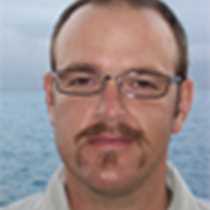As we approach Santiago we encounter a thick mist from the crashing waves blanketing the coast, with the hot equatorial sun illuminating the path. An early morning visit to Espumilla beach finds us walking in Darwin’s footsteps as this island was studied for a total of nine days during his visit in 1835. Some explore inland, passing massive incense trees with Galapagos hawks perched on the apex looking for prey. Part of our group stays close to the coast exploring within the massive mangrove trees. Ghost crabs flit back and forth along the beach as they obtain their food from the recently exposed coast as the tide drops.
Returning to the ship, we have been thoroughly awakened by our interest in James Island and we want more. After a repositioning of our floating home, the National Geographic Islander, we come upon Buccaneers Cove which was an important site for visiting sailors over the past three hundred years. Continuous exploration of the coast makes us aware of the fact that each island in the Galapagos is incredibly distinct from the previous.
A repositioning of the ship brings us to Puerto Egas in the afternoon. A black beach and a poison apple tree welcomes us to, what appears to be a desolate island, however it holds various surprises for us. Walking along the outer coast as the sun starts to dip below the horizon, we find red Galapagos chaff and Mollugo bushes giving us a sea of red along our chosen path. Compacted ash sandwiched among basalt lava flows meet the sea as we search for wildlife and find innumerable species as they continue their duties … Sea lions dry in the afternoon sun as Sally Lightfoot crabs clean the exposed rocks of its algae. A large great blue heron hunts among the beach morning glory and a juvenile striated heron continuously bothers its parent for a meal.
The sun lowers itself below the horizon to illuminate life in the distance and we return with a smile and more questions about this incredible life of which we are a part of.







